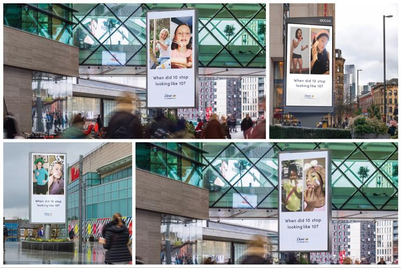
Shiseido is in the process of rolling out a new brand, Waso, around the world. Aimed specifically at millennials, the skincare range is based on the principles of washoku—that is, making the most of minimal, natural ingredients.
At the same time, it’s positioned as a global (rather than Japanese) brand. It has been available in a number of Asian markets and the US since July. In Japan, consumers are currently able to sign up for trial sampling. Promotional materials so far include a short film, an assortment of photography, an Instagram page and international and Japanese websites. Everything is framed by the concept that ‘all things beautiful come from nature’, with the launch film depicting the harmonious intersection of technology and nature. Two further, somewhat more artistic films are due to launch in September.
Selling to millennials is undeniably difficult. Waso is a brand designed to gain acceptance through subtlety and an absence of clear distinction. Asked to define the target audience, Azsa West, a creative director at Wieden + Kennedy Tokyo (W+K) who led the development of the brand, said: “I don’t define them. They define themselves.” The creative work is a celebration of diverse beauty and the uniqueness of the individual.
“If you come off as heavy-handed, you’ll lose them all together,” said John Rowe, W+K Tokyo’s managing director. Rowe said defining the target audience too rigidly is “a mistake lots of marketers make because they need definition to feel comfortable”.
The work is the result of collaboration with Shiseido’s own creative department, photographer Viviane Sassen, Dvein (a collective of film directors), and director Julian Klincewicz. Rowe said retail was also a key element of the launch and that involving Sephora, a French cosmetics store chain, in discussions around the concept at an early stage helped secure good placement.
The models (Jenny Choi, Torraine Futurum, Lotte Van Noort, Amalie Rose and Elliott Jay Brown) are diverse in terms of ethnicity and background. They span the worlds of skateboarding, music, fashion and transgender activism. The lineup is at the opposite end of the spectrum to a recent piece of work by Levi’s in Australia, which was slammed for presenting 12 white men as the country’s musical pioneers. West said the variety is new for Shiseido but “we’re not screaming from the rooftops about being democratic and having to embrace everyone. It’s a case of showing versus saying. We leave it to the audience and we think it will be very powerful.”


It was also important to avoid spelling out the product features, such as travel-friendly packaging design and ingredients such as carrot, mushrooms and tofu. “We know this audience doesn’t need things to be overly explained,” West said.
Instead, the films and photography use colour to suggest certain ingredients and products. Natural, rugged Japanese scenery is offset by the modern aesthetic of the models. In particular, the yet-to-be released ‘On the Road’ films are elegant in a way that work by other brands in the category often isn’t.
“Shiseido has a lot of credibility but is often associated with being for a certain kind of person,” West said. “We wanted to help push the brand to break away from current perceptions in order to connect with a newer, younger audience. But we had to do it in such a way that still maintains its relevancy, credibility, class and grace.”
She said the unwillingness of millennials to fit into beauty industry norms could be seen as a problem, but that Shiseido took it as an opportunity to challenge the status quo in the sector. “Individuality is beautiful and we want to celebrate that. Whether you’re transgender, have hundreds of freckles all over your face, look like a boy, are Korean or French, ride a skateboard or study maths, we are all for it. The people we chose are a reflection of how we want to redefine beauty.”
That made the challenge of a global launch easier. “Creating a global platform for any brand is never easy logistically,” West noted. “However, part of the beauty of the idea is that beauty can come in many shapes and colours. We gravitated towards a wide range of people from all over the world including the creative partners who helped bring this to life. We took into consideration each region’s needs before getting started and had a lot of productive conversations about it.”



.jpg&h=334&w=500&q=100&v=20250320&c=1)
.jpg&h=334&w=500&q=100&v=20250320&c=1)
.jpg&h=334&w=500&q=100&v=20250320&c=1)



.png&h=334&w=500&q=100&v=20250320&c=1)

.png&h=334&w=500&q=100&v=20250320&c=1)








